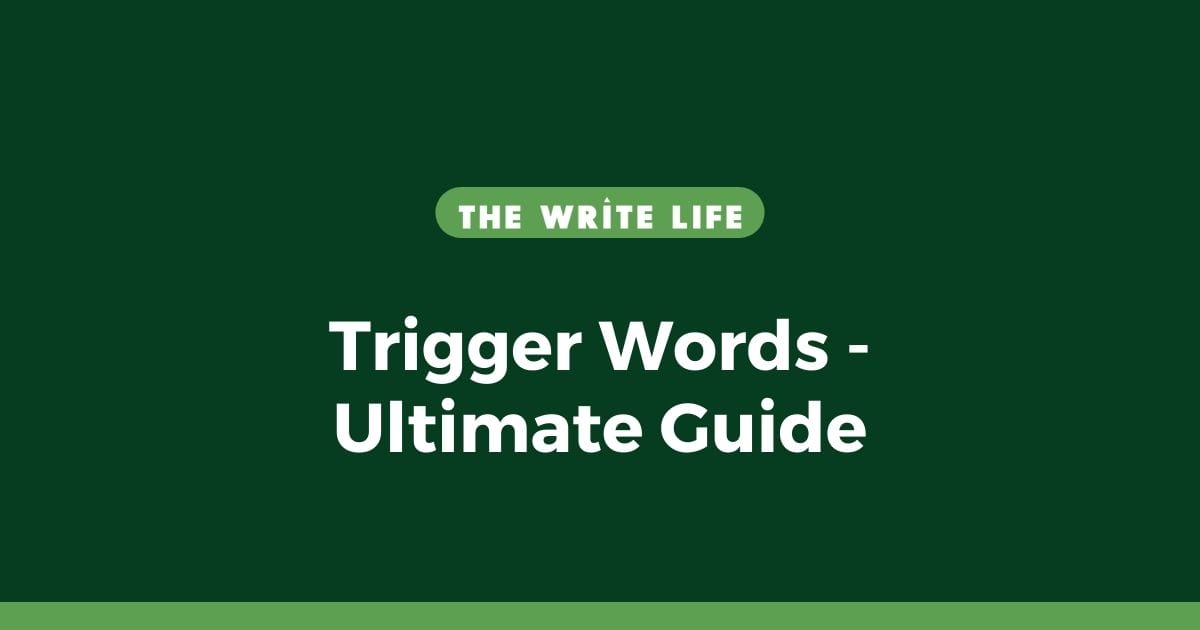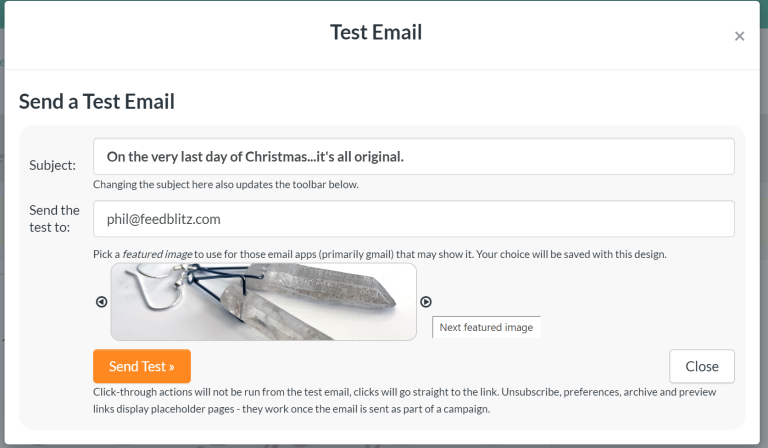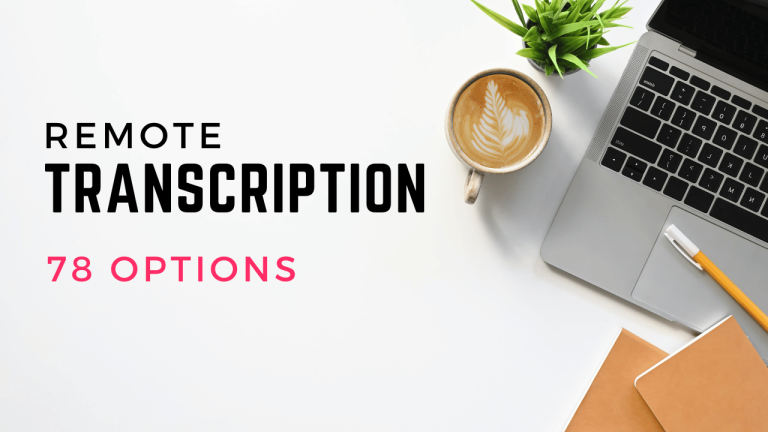When it comes to powerful copy, few elements hold as much sway as the aptly named ‘trigger words.’
These potent tools wield the power to evoke emotion, spur action, and forge a deeper connection with readers, making them indispensable in the arsenal of any writer.
From the persuasive prose of a seasoned copywriter to the captivating narratives of a storyteller, trigger words help breathe life into written content, transforming passive readers into active participants.
This guide aims to demystify the concept of trigger words, offering writers of all disciplines a comprehensive overview of how to harness their power to enchant, persuade, and engage.
What are trigger words?
Trigger words are linguistic catalysts, meticulously chosen to provoke a psychological or emotional response.
They are the secret ingredients that make headlines irresistible, calls to action compelling, and stories unforgettable. In essence, trigger words tap into our deepest desires, fears, hopes, and dreams, pulling at the heartstrings or stoking the flames of curiosity.
Their power lies not just in the emotional stir they create but in their ability to motivate readers towards a specific reaction or action.
Whether it’s to inspire joy, ignite a sense of urgency, or build trust, the strategic use of trigger words can significantly enhance the impact of your writing.
By understanding the underlying emotions and motivations of your audience, you can select trigger words that resonate on a personal level, making your content not just seen, but felt.
Nine types of trigger words for every situation
Let’s begin our process of exploring different types of trigger words.
For your convenience, we’ve arranged these trigger words into nine distinct categories. We’ll offer guidance on the purpose of each category along with an extensive list of trigger words and what they mean.
Let’s begin with trigger words that provoke an emotional response.
Emotional trigger words
Let’s look at words that trigger an emotional response.
What are emotional trigger words?
Emotional trigger words are powerful tools that tap into a wide range of human emotions, from joy to fear.
These words have the unique ability to connect with readers on a deeply personal level, evoking specific feelings that can significantly enhance the resonance and impact of your writing.
Whether it’s to inspire, comfort, motivate, or challenge, using emotional trigger words effectively can transform your content into a more engaging and memorable experience for your audience.
35 emotional trigger words
1. Joyful: Creates a sense of happiness and delight.
2. Fearless: Inspires bravery and overcoming challenges.
3. Tragic: Evokes feelings of sadness and compassion.
4. Euphoric: Generates a sense of extreme happiness or elation.
5. Infuriating: Provokes anger or strong annoyance.
6. Heartbreaking: Induces deep emotional pain or sadness.
7. Invigorating: Refreshes, energizes, and revitalizes.
8. Lonely: Conveys feelings of isolation or solitude.
9. Optimistic: Inspires hopefulness and confidence in the future.
10. Panic: Triggers a sudden sense of fear or anxiety.
11. Riveting: Captures intense interest or attention.
12. Soothing: Offers comfort, calmness, or relaxation.
13. Terrifying: Evokes extreme fear or horror.
14. Vulnerable: Expresses openness to emotional harm or attack.
15. Whimsical: Relates to light-hearted or playful spontaneity.
16. Empowered: Gives a sense of strength and confidence.
17. Despair: Conveys a deep sense of hopelessness.
18. Thrilled: Produces intense excitement or pleasure.
19. Betrayed: Feels deceived or let down.
20. Nostalgic: Evokes sentimental longing for the past.
21. Overwhelmed: Gives a sense of being overcome with emotions.
22. Anxious: Causes worry, nervousness, or unease.
23. Curious: Inspires a desire to learn or know more.
24. Frustrated: Expresses feelings of dissatisfaction or annoyance.
25. Hopeful: Indicates optimism or a desire for a certain thing to happen.
26. Inspiring: Motivates or influences positively.
27. Melancholic: Relates to deep, pensive sadness.
28. Outraged: Expresses strong anger, shock, or indignation.
29. Peaceful: Conveys tranquility and serenity.
30. Rejuvenated: Feels refreshed or revitalized.
31. Sympathetic: Shows feelings of pity and sorrow for someone else’s misfortune.
32. Wistful: Has a feeling of vague or regretful longing.
33. Zealous: Shows great energy or enthusiasm in pursuit of a cause.
34. Content: Expresses satisfaction or happiness.
35. Enraged: Describes intense or violent anger.
Incorporating a diverse range of emotional trigger words thoughtfully into your content can dramatically amplify its emotional depth and resonance.
By carefully selecting words that align with the desired emotional tone and response, you can craft narratives that not only inform and persuade but also emotionally engage and connect with your readers.
Action-oriented trigger words

It’s time to explore trigger words designed to make your reader take a specific action.
What are action-oriented trigger words?
Action-oriented trigger words are crafted to prompt immediate action or decision-making.
These dynamic words serve as catalysts, propelling readers from passive consumption to active engagement.
Ideal for calls to action in marketing, sales copy, or any scenario where a writer aims to induce a reader to take a specific step, these words can significantly boost conversion rates and reader response.
30 action-oriented trigger words
1. Act: Encourages immediate response.
2. Buy: Direct call to purchase or invest.
3. Click: Invites to follow a link or button.
4. Discover: Promotes exploration or revelation.
5. Download: Suggests obtaining digital content.
6. Enter: Invites participation or entry.
7. Join: Calls to become part of a group or community.
8. Learn: Encourages gaining new knowledge or skills.
9. Play: Suggests engaging in an activity or game.
10. Read: Invites to delve into content.
11. Register: Calls for signing up or enrolling.
12. Save: Promotes cost-saving or resource-preserving actions.
13. Start: Initiates beginning of an action or process.
14. Submit: Requests provision of information or materials.
15. Try: Encourages testing or sampling.
16. Visit: Invites to go to a place or website.
17. Watch: Suggests viewing a video or presentation.
18. Claim: Encourages taking possession of an offer.
19. Compare: Invites analysis or evaluation.
20. Donate: Calls for charitable giving.
21. Upgrade: Suggests moving to a better version or level.
22. Share: Encourages dissemination of information.
23. Schedule: Invites planning or arranging a time.
24. Review: Requests feedback or evaluation.
25. Access: Suggests obtaining entry or rights.
26. Choose: Encourages making a selection.
27. Get: General call to obtain or receive.
28. Sign up: Requests registering or subscribing to a service.
29. Unlock: Offers access to more content or features.
30. Explore: Invites investigation or discovery of something new.
By strategically incorporating these action-oriented trigger words into your content, you can effectively guide your readers toward the desired action.
These powerful words can transform passive interest into active engagement, enhancing the overall impact of your communication.
Trust-building trigger words

Trust is invaluable, and trigger words have a big role to play in building it. Let’s look at how.
What are trust-building trigger words?
Trust-building trigger words enhance your credibility and foster trust with your audience.
These words are vital in creating a sense of reliability and assurance, crucial in all forms of writing but especially in areas where trust is a key factor in the reader’s decision-making process, such as in financial advice, health information, and product reviews.
25 trust-building trigger words
1. Authentic: Signals genuine quality or origin.
2. Backed: Offers support or endorsement from a credible source.
3. Certified: Indicates approval or validation by an authoritative entity.
4. Dependable: Suggests reliability and consistency.
5. Endorsed: Shows support or approval by a respected figure or institution.
6. Guaranteed: Provides assurance of satisfaction or effectiveness.
7. Honest: Conveys straightforwardness and integrity.
8. Legitimate: Signals lawful or genuine status.
9. No-risk: Promises no danger or loss in engagement.
10. Official: Indicates formal authorization or recognition.
11. Proven: Demonstrates effectiveness or validity through experience or testing.
12. Reliable: Suggests dependability and trustworthiness.
13. Safe: Conveys freedom from harm or risk.
14. Secure: Indicates protection from danger or loss.
15. Tested: Shows that something has been examined and proven effective.
16. Transparent: Suggests openness and honesty in operations or intentions.
17. Trusted: Indicates being dependable and reliable.
18. Unbiased: Shows lack of prejudice or favoritism.
19. Verified: Confirms accuracy or authenticity through examination.
20. Warranted: Provides a formal promise, often related to quality or durability.
21. Accurate: Ensures correctness and precision.
22. Confidential: Promises privacy and secrecy.
23. Ethical: Suggests adherence to moral principles.
24. Fair: Indicates impartiality and justice.
25. Privacy: Guarantees protection of personal information.
Incorporating trust-building trigger words thoughtfully within your content can greatly enhance your audience’s confidence in your message.
These words help to establish a foundation of credibility and reliability, essential for building lasting relationships with your readers.
Curiosity-Inducing trigger words

Never underestimate the power of curiosity. Here are trigger words that allow you to leverage exactly that.
What are curiosity-inducing trigger words?
Curiosity-inducing trigger words are designed to spark the reader’s interest, driving engagement and exploration.
By promising new knowledge, hidden information, or untold stories, these words leverage the natural human desire to learn and discover.
They are particularly effective in headlines, email subject lines, and introductions, where capturing attention is critical.
25 curiosity-inducing trigger words
1. Secrets: Suggests hidden or exclusive knowledge.
2. Discover: Promises new information or experiences.
3. Reveal: Indicates uncovering or disclosing information.
4. Uncover: Suggests bringing to light previously hidden details.
5. Behind the Scenes: Offers a glimpse into hidden aspects or processes.
6. Mystery: Implies something unknown or to be solved.
7. Exclusive: Signals access to privileged information.
8. Hidden: Suggests concealed or not easily found information.
9. Forbidden: Implies knowledge or areas typically off-limits.
10. Banned: Suggests something prohibited, increasing intrigue.
11. Unveil: Promises the revealing of something new or exciting.
12. Insider: Implies access to confidential or privileged information.
13. Unlock: Offers the promise of accessing something valuable.
14. Confessions: Suggests revealing personal or secretive information.
15. Untold: Indicates stories or information not previously shared.
16. Private: Suggests exclusivity or restricted access.
17. Sneak Peek: Offers a quick, exclusive look at something new.
18. Breakthrough: Implies a significant discovery or achievement.
19. Unexplored: Suggests something not yet investigated or known.
20. Exposed: Reveals something hidden, often scandalous or controversial.
21. Unravel: Promises to clarify or solve a mystery or complexity.
22. Little-known: Indicates information not widely known or recognized.
23. Rare: Suggests something uncommon or infrequently encountered.
24. Unprecedented: Indicates something never done or seen before.
25. Classified: Implies restricted or highly confidential information.
By weaving curiosity-inducing trigger words into your content, you can effectively pique the interest of your readers, compelling them to seek more information.
These words act as a magnet, drawing readers into your narrative and keeping them engaged through the promise of learning something new or exclusive.
Urgency-creating trigger words

Urgency is one of the most powerful forces in compelling a response from your readers. Here are the words you need.
What are urgency-creating trigger words?
Urgency-creating trigger words are crucial for conveying time sensitivity, encouraging quicker decision-making.
These words prompt readers to act swiftly, often in scenarios where a limited offer, deadline, or opportunity is at stake.
Perfect for sales, promotions, and calls to action, urgency-triggering words help to increase the perceived value of an offer by highlighting its temporary nature.
20 urgency-creating trigger words
1. Now: Implies immediate action is necessary.
2. Limited: Suggests availability is restricted.
3. Hurry: Encourages quick action.
4. Deadline: Specifies a final date or time for action.
5. Expires: Indicates an offer is ending soon.
6. Last Chance: Suggests a final opportunity.
7. Immediately: Urges instant action or response.
8. Closing Soon: Indicates a nearing end or conclusion.
9. While Supplies Last: Suggests limited stock or availability.
10. Today: Implies action should be taken within the day.
11. Final: Indicates the last opportunity or offer.
12. Countdown: Suggests a limited time before an event or offer ends.
13. Rush: Urges to act quickly or with haste.
14. Urgent: Indicates a need for immediate attention or action.
15. Flash Sale: Suggests a very short-term discount or offer.
16. Offer Ends: Specifies when an offer will no longer be available.
17. Don’t Miss Out: Warns against losing an opportunity.
18. Act Fast: Encourages quick decision-making.
19. Ending Soon: Suggests a nearing deadline or conclusion.
20. Time-Sensitive: Indicates an offer or opportunity is not permanent.
Incorporating urgency-creating trigger words into your writing can significantly influence the reader’s decision-making process, encouraging them to act more quickly than they otherwise might.
These words are especially effective in promotional content, where creating a sense of scarcity and immediacy can drive conversions and engagement.
Value-offering trigger words

Make sure your readers see the value in your content with this type of trigger word.
What are value-offering trigger words?
Value-offering trigger words highlight the benefit or value proposition of an offer, making it more attractive to the reader.
These words are crucial in communicating the advantages or positive outcomes of a product, service, or piece of content, helping to outline what the reader stands to gain by engaging.
They are particularly useful in marketing and sales copy, where showcasing the value directly impacts the reader’s decision to take action.
20 value-offering trigger words
1. Free: Suggests no cost or risk to the reader, enhancing appeal.
2. Bonus: Indicates additional value beyond what is expected.
3. Exclusive: Suggests unique benefits not available to everyone.
4. Premium: Implies superior quality or service.
5. Gift: Offers something extra without expectation of return.
6. Limited Edition: Suggests unique value due to limited availability.
7. Discount: Indicates a reduced price, enhancing value.
8. Deal: Suggests a favorable bargain.
9. Prize: Offers a reward or win for engagement.
10. Value: Emphasizes the worth or usefulness of an offer.
11. Savings: Highlights financial advantage or cost reduction.
12. Win: Suggests receiving something of value through luck or competition.
13. Advantage: Indicates a beneficial factor or superiority.
14. Enhanced: Suggests improved features or benefits.
15. Upgrade: Offers an increase in value or function.
16. Profit: Indicates financial gain or benefit.
17. Reward: Offers a return or benefit for action taken.
18. Solution: Suggests a means of solving a problem, adding practical value.
19. Gain: Indicates obtaining something beneficial.
20. Best: Suggests superior quality or advantage over others.
Utilizing value-offering trigger words effectively in your content can significantly enhance the attractiveness of your offer, clearly communicating the benefits and rewards that await your audience.
By emphasizing what readers stand to gain, you motivate them to take the desired action, whether it’s making a purchase, signing up for a service, or engaging with your content.
Exclusivity-suggesting trigger words

As humans we find the idea of something exclusive and special hard to resist. These trigger words will help you inspire that feeling in your readers.
What are exclusivity-suggesting trigger words?
Exclusivity-suggesting trigger words create a sense of limited access or special privilege, making offers more desirable by tapping into the reader’s desire to be part of an elite group.
These words are powerful in marketing and promotional content, where creating a feeling of scarcity and exclusivity can drive immediate action and enhance perceived value.
15 exclusivity suggesting trigger words.
1. Members Only: Limits access to a select group, increasing desirability.
2. VIP: Suggests premium status and exclusive benefits.
3. Limited Access: Implies restrictions in availability, enhancing value.
4. Exclusive Offer: Signals a special deal not available to the general public.
5. Private: Indicates selective access or confidentiality.
6. Elite: Suggests a superior status or quality reserved for a select few.
7. Secret: Implies hidden or privileged information.
8. Rare: Highlights scarcity and uniqueness.
9. Invite-Only: Limits participation to those who are specially chosen.
10. Restricted: Implies limited availability or access.
11. Selective: Suggests a careful choice, adding to the sense of value.
12. Insider Access: Offers privileged information or opportunities.
13. First Look: Gives early access or a preview before the general release.
14. Exclusive Rights: Suggests unique access to use or engage with something.
15. Limited Release: Indicates availability for a short time or in limited quantities.
Incorporating exclusivity-suggesting trigger words into your writing can dramatically increase interest and urgency, as readers are often driven by the fear of missing out on something special or unique.
By presenting your offer as exclusive or limited, you not only enhance its perceived value but also motivate your audience to act promptly to secure their place or advantage.
Safety-assuring trigger words

The need for safety is incredibly powerful. This set of trigger words can help your readers feel safe.
What are safety-assuring trigger words?
Safety-assuring trigger words convey security, safety, and reassurance, crucial for overcoming objections, especially in transactions or commitments.
These words play a vital role in alleviating fears and building trust, by assuring readers that their decision to engage is free from risk or harm.
They are particularly important in sectors like finance, healthcare, and e-commerce, where concerns about safety and privacy are paramount.
15 safety-assuring trigger words
1. Protected: Ensures defense against harm or loss.
2. Secure: Implies safety from external threats.
3. Guaranteed: Offers assurance of reliability or promised outcomes.
4. Risk-Free: Suggests engagement without potential for loss.
5. Safe: Indicates absence of danger or risk.
6. Privacy: Assures confidentiality and protection of personal information.
7. Refundable: Implies the possibility of getting one’s money back if not satisfied.
8. No Obligation: Suggests freedom from forced commitment or consequence.
9. Insured: Indicates coverage against potential loss or damage.
10. Certified: Verifies approval by authoritative entities for safety or quality.
11. Encrypted: Suggests protection of digital information from unauthorized access.
12. Money-Back Guarantee: Offers reimbursement as assurance of product satisfaction.
13. Secure Checkout: Assures safe and protected online purchase transactions.
14. Confidential: Guarantees that information is kept private.
15. Verified: Confirms authenticity or credibility, enhancing trust.
By skillfully weaving safety-assuring trigger words into your content, you can effectively address and mitigate the concerns and hesitations of your audience.
These words serve to reassure readers, fostering a sense of trust and security that can significantly impact their willingness to take the desired action, whether it’s making a purchase, signing up for a service, or sharing personal information.
Power trigger words for storytelling

Great storytelling is already immensely powerful – this set of trigger words levels up that power even further.
What are power trigger words for storytelling?
Power words for storytelling enhance imagery, emotional depth, and engagement in narrative writing.
These words captivate the reader’s imagination, drawing them deeper into the story.
They are essential for writers looking to create vivid, memorable narratives that resonate with their audience on an emotional level.
20 power trigger words for storytelling
1. Epic: Conveys grandeur and awe-inspiring scale.
2. Heartwarming: Evokes feelings of kindness and comfort.
3. Tragic: Implies deep sadness or disaster.
4. Triumphant: Suggests victory or success after effort.
5. Mysterious: Invokes curiosity and intrigue.
6. Forbidden: Suggests something prohibited, enhancing curiosity.
7. Haunting: Leaves a lasting, profound impression.
8. Riveting: Captures and holds attention tightly.
9. Breathtaking: Indicates overwhelming beauty or impact.
10. Gripping: Holds interest tightly, compelling continued engagement.
11. Spellbinding: Captivates in a seemingly magical way.
12. Harrowing: Describes distressing or agonizing experiences.
13. Enchanting: Captures charm or delight, often magical.
14. Devastating: Conveys extreme emotional or physical impact.
15. Exhilarating: Produces excitement or thrill.
16. Surreal: Indicates an unreal, dream-like quality.
17. Chilling: Suggests fear or horror, a spine-tingling effect.
18. Electrifying: Imparts a sense of thrill or excitement.
19. Poignant: Evokes a keen sense of sadness or regret.
20. Whimsical: Conveys playfulness or fanciful imagination.
Incorporating power words into your storytelling can transform simple narratives into immersive, emotionally charged experiences.
These words help to paint more vivid pictures, evoke stronger emotions, and create a more compelling read.
By carefully selecting power words that align with the tone and direction of your story, you can significantly enhance the impact and memorability of your writing, engaging your readers on a deeper level and leaving a lasting impression.
Now that we’ve explored the vast landscape of trigger words across various categories, let’s conclude our comprehensive guide with practical advice for integrating these powerful words into your writing effectively.
How to use trigger words in writing
Integrating trigger words into your content should feel natural and seamless.
To avoid making your writing appear forced or overly salesy, sprinkle trigger words throughout your content where they naturally enhance your message without overpowering it.
The key is subtlety; let these words amplify your voice rather than overshadow it.
How to choose the right trigger words for your readership and purpose
Understanding your audience is crucial when selecting which trigger words to use.
Consider the emotions, desires, and needs of your readers, as well as the context of your content.
For instance, urgency-creating words might be more appropriate for a promotional email, while trust-building words could be vital for a service description.
Aligning trigger words with your audience’s expectations and your writing goals will ensure they resonate more deeply and elicit the desired response.
How to refine your use of trigger words
The effectiveness of trigger words can vary greatly depending on their context and usage.
Conduct A/B testing in your marketing materials to see which trigger words drive more engagement or conversions.
Pay attention to analytics and feedback to understand how your audience reacts to different words, and be prepared to adjust your strategy accordingly.
Over time, you’ll develop a keen sense for which words work best in various situations, allowing you to craft more compelling and effective content.
Are you ready to put your knowledge of trigger words into practice?
Trigger words are a powerful element in the writer’s toolkit, capable of transforming passive reading into active engagement.
By understanding and using these words thoughtfully across different types of writing, you can enhance the impact of your content, whether you’re aiming to persuade, inform, or entertain.
As you begin to use these trigger words in your writing, don’t lose sight of the importance of having a meaningful message to share.
When you combine purposeful writing with trigger words, you stand a much greater chance of having the effect you desire.










